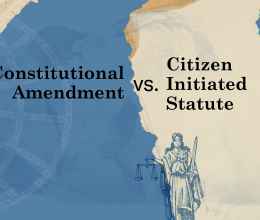August 18 of this year will be 100 years since the last of the 36 ratifying states that were required to secure adoption were confirmed, and the Nineteenth Amendment’s ratification to include voting for women came to be.
Led by activists Susan B. Anthony and Elizabeth Cady Stanton, women had organized for over five decades, and on this day 100 years ago, they finally had their reckoning. They had valiantly fought and gained their right to vote with the Nineteenth Amendment – guaranteeing voter rights for sisters, daughters, and fellow female compatriots indefinitely.
To be crystal clear, white women were finally allowed to vote, and 1920 has been touted for years as the year that women finally gained this fundamental right.
However, not all women were given this right 100 years ago…
In fact,
- Asian women weren’t granted their right to vote until 1952.
- Indigenous women couldn’t vote until 1957.
- Black women have only been able to vote since 1965.
Let that sink in.
This means that currently Asian women over 68, Indigenous women over 63, and Black women over 55 once lived during a time in which they did not have the right to vote, but white women did. That means that several groups of women of color alive today lived under presidents who they had no say in. Imperative to note here is that it’s not just presidents, but it was also the school board officials who determined their and their children’s educational needs, the very judges they appeared in front of, and state lawmakers who decided what they could and couldn’t do when it came to their bodies and making reproductive choices.
From this, one may go one step further and question: are we doing everything in our power to make sure that all women are now in a position to vote and have their vote fairly counted? When it comes to the Nineteenth Amendment’s ratification, so many of us have assumed for so long that this represented all women, and this is a prime example as to why we shouldn’t assume that simply being given the legal right to vote is enough and does enough.
In other words, one shouldn’t automatically think that the right to vote guarantees the accessibility to the ballot, and this, quite frankly, is because of voter suppression. In fact, the National Organization for Women Foundation has affirmed that voter suppression disproportionately targets and affects women, youth, and communities of color. Supporting this is the ACLU, who has found that since 2008, states across the country have passed measures to make it harder for Americans – particularly Black people, the elderly, students, and people with disabilities – to exercise their fundamental right to cast a ballot. These measures include cuts to early voting, voter ID laws, purges of voter rolls, and now the assault on the postal service and bans on additional ballot boxes. Additionally, gerrymandering also undermines the voting system.
So you may wonder – what do we do? How do we ensure that not only all women, but everyone, is able to vote without suppression and gerrymandering?
The answer isn’t so simple. There is a lot to work to be done, especially in the Buckeye State. The ACLU of Ohio, the Ohio League of Women Voters, and the A. Philip Randolph Institute of Ohio and others are constantly fighting back and punching upward to challenge voter suppression. Recently we filed a lawsuit challenging Ohio’s practice of rejecting absentee ballot applications and absentee ballots due to perceived mismatches of voters’ signatures. In addition, we sent a letter urging Secretary LaRose to diversify the ‘Ready for November Task Force,’ because it lacks representatives from voting rights, disability access, re-entry, and Black and minority-led organizations and made requests to make voting more accessible through other means.
Supporting voting rights groups through volunteering, disseminating their resources and educational tools, and donating is invaluable to the fight for voting rights and accessibility through advocacy and litigation.
However, that’s not the only thing you can do. You can also:
- Lobby for bills and volunteer for ballot initiatives that make voting more accessible.
- Educate yourself on why same-day and automatic voter registration are vital.
- Conduct or volunteer to be a part of voter registration drives.
- Participate in public forums such as the ACLU of Ohio, Towards Employment, and All Voting is Local’s upcoming Voting Rights Tele-Townhall.
- Hold your lawmakers accountable while also thoroughly vetting candidates through resources such as our Candidate Questionnaire – and remember, most, if not all, of these issues intersect and impact voting in one capacity or another.
- Spread the word on resources such as the ACLU of Ohio’s webinars on voting rights for people with disabilities and people with criminal convictions and our Vote Center, which serves an all-comprehensive guide on how to vote in Ohio.
- And when the time – and your ability – comes to vote, vote.
Vote not only for those who will protect our civil liberties such as reproductive rights and free speech, but also vote to elect candidates who champion access to the ballot! Vote for ballot measures, whether now or in the future, that ensure our voices are heard about election modernization reforms such as same-day and automatic voter registration, ensuring access for voters with disabilities, and protecting overseas voting for our military. And also, vote for all the women who were excluded from the guarantees of the 19th Amendment 100 years ago today.
Our votes still matter. They always do and always will, regardless of any and all attempts to take away our power.
And it’s time our voices are heard this November – and the next, and the next, and the next…







